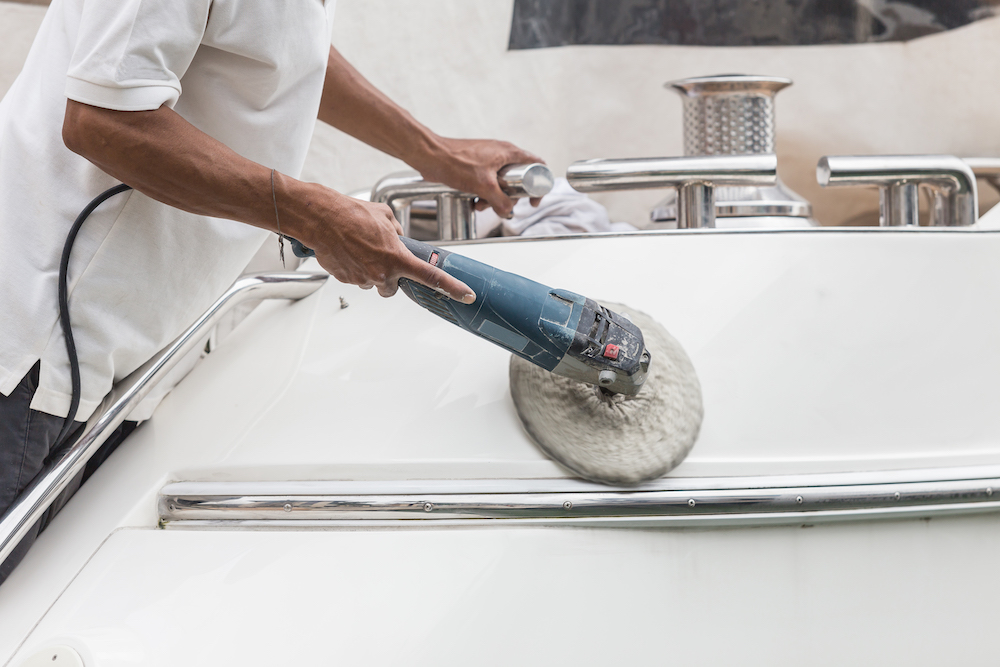The care and maintenance of an aquatic vessel are very similar to taking care of cars. Maintaining your boat shouldn’t be difficult however, it does require determination and perseverance. Similar to cars it will require certain kinds of maintenance during certain times and after usage.
Follow this guide for a complete checklist for maintaining your boat, quick advice for maintaining your boat, and how to schedule your scheduled maintenance.
Boat Maintenance Checklist
If you decide to purchase a boat you must think about having a plan for maintenance. Be aware of your current capabilities and knowledge. What type of work are you already proficient to do, and which services you should seek help from a professional for?
To maintain your boat It is recommended to:
- Test your electronics
- Test your lights
- Make sure you check the levels of fluids such as power steering, and coolant
- Change the oil
- Inspect the propellor
- Check the gas tank, fuel lines, and engines
- Check for corrosion, leaks, or cracks
- Ensure that the railing is secure
- Check the battery’s charge
- Ensure that you are wearing all your safety gear
- Check for belts and other engine components
- Get your boat detailed How to keep a boat in good shape boat
Wash and wax
One of the best methods to ensure longevity for your vessel is to keep the fiberglass hull fresh and well-lubricated. The coating of fiberglass gets chalky if not waxed on a regular basis. It is also beneficial to wash off the previous layer before applying a new layer of wax. Unlike cars, boats lack an opaque coating, which is why proper waxing is vital to the life expectancy of your boat. If you don’t have a wax sealant that can protect your boat, it could become oxidized and cost more to fix than it would get it waxed properly up at the beginning. Keeping your boat clean inside and out will prevent the growth of mold.

The effects of mold can be pervasive and it’s best to wash your boat often than try to contain the spread of mold. Beware of using harsh chemicals to clean your boat because they could reduce the gel coating. Regularly cleaning your boat once or twice each year will not only keep your boat looking amazing it will also ensure that it’s working correctly.
Wipe Off Your Boat
After a day of fun enjoying the ocean, grab a towel to dry the boat clean. The lingering moisture could cause mold growth, mildew growth, staining, corrosion, and other issues. Drying off any excess water will allow your boat to last longer. Lifejackets, ropes, towels water toys, and other items that are susceptible to moisture or retention must be removed from the boat, dried, and put into an air-tight storage container following use.
If you forget to wipe off your boat, and some of your equipment gets destroyed, you can always check out boat outfitters and see if they have those parts that you need to replace. You can’t, under any circumstances stay on a boat that is not in a good shape.
Check Metal Parts for Corrosion
Any piece of metal that is exposed from the boat can get corroded and become rusty. Make sure to check the metal parts regularly for signs of corrosion, and dry them when you can. The engine of your boat should be examined for corrosion. To prevent corrosion and other issues with your engine it is recommended to flush your engine.
Regular Oil Changes
Read the instruction manual to find out when you’ll need to replace your engine. It is generally recommended that you replace the oil approximately once every 100 hours. Quicky-lube shops for boats and watercraft aren’t actually available therefore, you need to take your boat to a certified specialist or dealership with an authorized service center.
Check Your Propeller
Never skip thoroughly checking your propeller. Many issues could occur with your propeller. You should regularly remove it from the boating season and inspect it. It’s okay to have scratches or damaged paint, however, the most severe dents or indications of impact should be addressed with an expert. Otherwise, it could result in a decrease in performance and extra fuel consumption. It’s also a good opportunity to check if your water supply is free of any debris. An issue that is common is that the fishing line can end up getting wrapped around the propeller. If this occurs it is best to contact the dealership to examine your gearcase and ensure that there aren’t any leaks. Gearcase servicing should always be carried out by a qualified professional. After you have inspected your propeller, you need to apply waterproof grease. Then, you can reinstall your propeller in the same sequence you removed it in.
Remove Your Battery in the Off-Season
Batteries aren’t guaranteed to last forever, but you can prolong the lifespan of your battery by removing it in the off-season when your boat is stored away. Cleaning it up, charging it, and storing it in an area a place that won’t be affected by temperature changes and the elements.
Taking A Boat in for Maintenance
It is recommended to bring your boat into the shop for servicing prior to the time the boating season begins and for maintenance when certain circumstances arise like a dented prop or engine corrosion or even the need for an oil replacement. If you take your boat to be serviced for maintenance, winterization, or spring maintenance It is best to make an appointment ahead of time and plan to arrive early.

